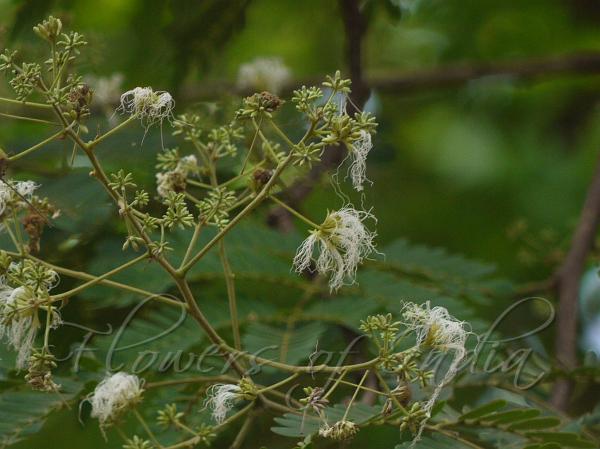|
| Black Siris |
|

|

| File size | 485380 |
| Original date | 5/29/11 1:44 PM |
| Resolution | 2048 x 1536 |
| Flash | Flash did not fire, auto |
| Focal length | 200.0mm |
| Exposure time | 1/250s |
| Aperture | 5.6 |
| Focus Distance | |
| Metering Mode | Spot |
| Camera make | Panasonic |
| Camera model | DMC-G1 |
| Sensor type | OneChipColorArea |
|
|
|
|
Photo: |
Botanical name: Albizia odoratissima Family: Mimosaceae (Touch-me-not family)
Synonyms: Acacia odoratissima, Albizia micrantha, Mimosa odoratissima
Synonyms: Acacia odoratissima, Albizia micrantha, Mimosa odoratissima
Black Siris is a medium sized tree up to 22 m tall,
diameter 120-150 cm, and a short trunk. Bark is dark grey to light
brown with horizontal warts. Crown is spreading, relatively dense with
drooping leaves. Branching habit is uniform, but irregularities occur
when the tree is damaged. Leaves are dark green, double compound;
rachis 7-20 cm long, bearing 1 lower gland 1-2 cm above the base, and 1
upper gland between the 2 distal pairs of side-stalks. Side-stalks are
3-5 pairs, 7-14 cm long; per side-stalks, 10-16 pairs of oblong to
obovate leaflets, 1.1-3.5 cm x 0.6-1.2 cm. Inflorescence is clustered
into hairy panicles 8-20 cm long, at branch ends. Flowers are 10-15 per
head, dimorphic, pale yellowish white, fragrant. Pods are thin, flat,
13-30 cm long, 2.5-3.5 cm broad, leathery, brown when ripe, dehiscent,
each containing 8-14 seeds. Seeds ovoid, 9 mm x 6 mm x 1.5 mm. The
black siris occurs naturally in Southern China, Myanmar and peninsular
India. It is extensively grown in its native range and has been
introduced in Eastern Africa.
Medicinal uses:  The bark of the tree is useful in ulcers, leprosy, skin diseases,
cough, bronchitis, diabetes and burning sensation.
The bark of the tree is useful in ulcers, leprosy, skin diseases,
cough, bronchitis, diabetes and burning sensation.
 The bark of the tree is useful in ulcers, leprosy, skin diseases,
cough, bronchitis, diabetes and burning sensation.
The bark of the tree is useful in ulcers, leprosy, skin diseases,
cough, bronchitis, diabetes and burning sensation. | Identification credit: Shrikant Ingalhalikar | Photographed in Karnataka & Mizoram. |
• Is this flower misidentified? If yes,